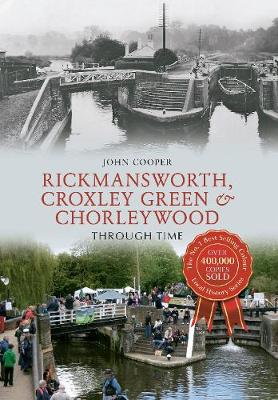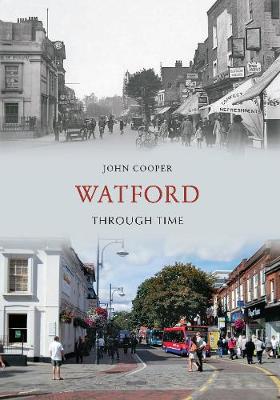Through Time
3 total works
Rickmansworth, Croxley Green and Chorleywood Through Time takes the reader on a nostalgic journey back to an age when the pace of life was much slower and more tranquil than it is today. Using a vibrant selection of old picture postcards, many of which have been stored in dusty attics untouched for generations, coupled with superb modern-day colour photographs as a comparison, we witness the many changes that have occurred in these lovely picturesque areas over the past 100 years.
Memories abound: Rickmansworth's first railway, which opened in 1862, King Edward VII's visit to Croxley Green in 1909 and countless images of the charming village of Chorleywood, captured on camera by a small but dedicated group of photographers. Without their enthusiasm and commitment in recording for posterity mostly everyday views and occurrences, much of these areas' pictorial history would have been lost forever.
Memories abound: Rickmansworth's first railway, which opened in 1862, King Edward VII's visit to Croxley Green in 1909 and countless images of the charming village of Chorleywood, captured on camera by a small but dedicated group of photographers. Without their enthusiasm and commitment in recording for posterity mostly everyday views and occurrences, much of these areas' pictorial history would have been lost forever.
Harpenden is a small picturesque town situated on the A1081 midway between St Albans and Luton and 25 miles north-west of London. Arguably one of the most attractive areas in the wooded county of Hertfordshire, the town has charm and character all of its own, from the wide boulevard that is the High Street to the lush, verdant expanse of the Common that reaches almost into the town itself. Harpenden Through Time takes the reader on a nostalgic journey back to an age when the pace of life was much slower and more tranquil than it is today. Using a vibrant selection of old picture postcards, many of which have been stored in dusty attics, untouched for generations, coupled with modern-day photographs, we witness the many changes that occurred as this quiet agricultural village developed into the attractive town that we see today.
Watford is situated between the Rivers Gade and Colne, fifteen miles north-west of London in what Charles Lamb, the eighteenth-century English essayist, once called 'hearty, homely, loving Hertfordshire'. A Saxon chief named Wata is believed to have settled where the existing Lower High Street crosses the Colne, and this came to be known as Wata's Ford, later shortened to Watford. Watford Through Time takes the reader on a nostalgic journey through the old market town and the beautiful Cassiobury Park at a time when the pace of life was much slower and more tranquil than it is today. The images in this book, including those taken by the author as a modernday comparison, provide a fascinating insight into the tremendous changes that have taken place in the town over the last hundred years.


